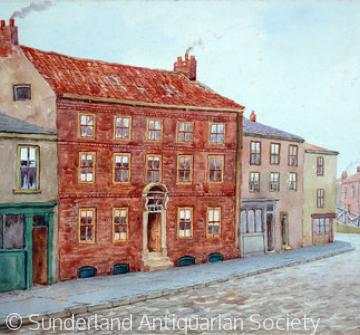Townhouses

A flurry of house-building after 1700 concentrated in and around the newly laid Church Street, in the east end of Sunderland. This set of images, brought together for the first time, shows striking similarities in style. Prestigious residences, built in brick for merchants and coal-fitters, most are three-storey with basement, and five bays wide. While extremely substantial, most were built in terraces. John Freeman’s house in Church Street and its neighbour are the only two now standing. Lambton house (above) was more isolated when built before 1737, facing south from High Street’s then far end. It resembles both the Church Street houses, and the mansion of Edward Browne at the end of Fitters Row.More individualism was expressed in external features such as door surrounds. Browne’s were especially extravagant, his end terrace location offering the unusual luxury of three façades and extensive gardens. Some of the high quality internal fittings survived later conversion to tenements or other uses. The home of Freeman’s neighbour, Christopher Bramwell, was, like most, eventually subdivided for multiple occupation, but the hoist suggests it had an industrial purpose. NOTES:Pevsner, 455-6; G. Patterson, ‘Harrison’s Buildings: Sunderland’s first council housing’, Sund. Hist., 3 (1985), 3
Content generated during research for two paperback books 'Sunderland and its Origins: Monks to Mariners' (ISBN 13 : 9781860774799) and 'Sunderland: Building a City' (ISBN 13 : 978-1-86077-547-5 ) for the England's Past for Everyone series










